#centre for environmental justice
Explore tagged Tumblr posts
Text
anyway thank you to the queens and wives in my phone who were kind to me today 🥹💖 there is hope i do have another potential scholarship source i just need to go through the application process again......... but we can do it!!!!!!!
#um i just finished giving a talk to an environmental justice law centre and i rmred that i am useful and knowledgeable and NOT unworthy!!!!#i am useful outside of academia!!!!!! i am an expert in my research area!!!!! imposter syndrome BEGONE BE BANISHED#ily all soooooooo much
1 note
·
View note
Text
New WWE AU Idea: Newscaster AU
Ok, I need to put this down somewhere before it drives me insane. It's a stupidly niche AU idea but it's taking up so much brain power for me right now for some reason. It's a journalist AU where the WWE is a TV news channel. Details below the cut.
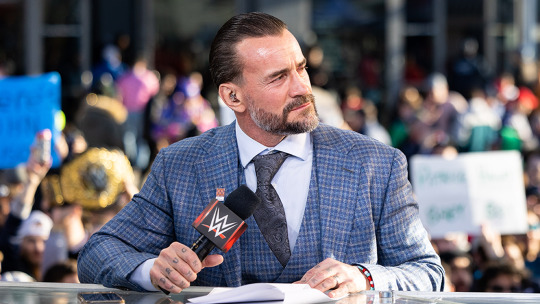
But basically I've been thinking about all the people who've been running the PLE pre & post shows & hosting PLEs this year a lot. And with the whole news-style interviews and sitting around on sets that often look like news studios, what if they were all actual reporters in a news channel? It's a bit of a weird one I know, but it's been rolling around in my head all weekend.
Btw I have no idea if USA news channels call their emplyees the same sort of titles as we have in the UK so excuse me if the job titles are a bit scuffed. But basically here's all the roles they have, why I chose those roles for them (in brackets), and what they get up to as part of this AU news channel:
Michael Cole: Senior Newsreader- (Because of his commentary work and journalism background). Out of all the people currently regularly on TV, he's been there the longest and is highly respected. Always trusted to keep a level head in times where the world feels like it's gone to hell.
Corey Graves: Business Correspondent- (Because he has a degree in marketing). Feel like he'd do a segment kinda like "The Martin Lewis Money Show" we have in the UK, where he goes through government changes to finance-related stuff, explains it and how it'll affect the average person, and then answers questions from a live studio audience and gives them advice.
Wade Barrett: Environmental Correspondent- (Because he has a degree in marine biology). I get the vibe his favourite animals are tiny and obscure things like a specific type of sea pickle on the verge of extinction or something and he defends them aggressively to get people to help save the species. Has memorised his evidence for global warming and can reel it off with ease, but is sick of having to do it so much cos people STILL DON'T BELIEVE IN IT????????
Pat McAfee: Sports Correspondent- (Do I even need to explain why? He's a mad man and I can't imagine him doing anything else, even out of a whole cast of people on a sports show like WWE). Feel like most people try to keep somewhat calm and professional on a news show, but he's just himself the whole way through, making him one of the most popular reporters on the whole channel because people want to see his OTT reactions to certain events. Feel like he'd also probably be in charge of the news station's radio show, too, what with how he has the Pat McAfee Show in real life.
Big E Langston: Political Correspondent- (He just gives me that vibe being all analytical about wrestling feuds). He's just as tired with politicians' nonsense as we all are, to the point it's hard to hide his dissappointment when they say something stupid and he has to remain unbiased. Never lets politicians get away with evasive answers when he interviews them, but smiles the whole time as he makes them wish they were never born.
CM Punk: War Correspondent- (The man is always scrapping for the love of the game, so of course he'd be in the centre of a war). He's had bombs dropped on his head more times than he can count and regularly goes for runs as a workout to make sure he's still fit enough to run for his life when he's in active warzones. Can tell you all about the complex international relations and battle strategies but secretly has a morbid interest in death & gore which is what actually got him into the job. Once got shot on live television, showed off the wound on camera and finished his broadcast before getting medical treatment. Was only mildly miffed about nearly dying, mostly excited by the whole experience.
Jackie Redmond: Justice Correspondent- (Basically her analyst role in WWE gives me the vibe of someone discussing a crime case). Can tell you all about how 17 people have been skinned alive and cannibalised in graphic detail so casually as if she's talking about the weather. At this point in her career, pretty much nothing can phase her. So if something actually manages to leave her speechless, you know it's bad.
Cathy Kelley: General Reporter- (Basically cos it's just what she's doing in WWE). Going wherever she needs to be to interview people and get to the bottom of a story. Has interviewed some really dangerous people that are twice her size all in the name of finding a good story and everyone's just like "for the love of god please think about ur own safety for once."
The Miz: Media Correspondent- (Cos of his reality TV background and generally over the top vibes). He'd be all over red carpet events and he's definitely still hoping to use his media journalism as some leverage to get into show-business himself. Celebs see him at events and pray they haven't been spotted so they don't have to talk to him, cos he can be a lot. But this little bastard has the eyes of a hawk and will hunt them down. Especially if he's persoanlly a big fan of them and their work.
R-Truth: Weatherman- (Cos he's a ray of sunshine :) ) Just imagine the batshit insanity of him telling people about a storm or how nice the weather's gonna be or something (I'm thinking like a Bob Hale skit on the original Horrible Histories, that kind of madness).
Sheamus: Tech Correspondent- (Cos he's a former IT technician so he can be all brainy). Constantly treated like IT support rather than a journalist and is sick of having to switch on servers people promised were already on, and listening to people with no idea what they're talking about prattle on about the benefits of AI. But at least he gets to talk about flying cars and robot dogs all day and muck about with new tech for a living.
Triple H: Editor In Chief- (Basically the top role in journalism to match with his current role in real life). Running things is like trying to herd cats, but hey, he can put on a pretty damn good show. Trying desperately to move on from the scandals of the days when the previous editor-in-chief was in charge of things.
Obviously some of them wouldn't be able to use their ring names in those environments. Plus I'm probably forgetting some people who should be in this AU that have been involved in pre/post shows, hosting, and commentary, but my brain's a bit too frazzled to go thru all the PLEs right now.
But like... come on... look at them and just imagine for a second... do you see the vision???? Or have I finally gone a bit mad??
LIKE JUST LOOK AT THEM!!
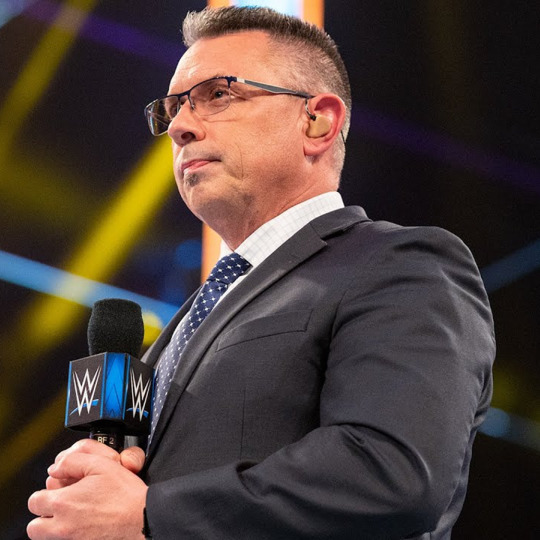
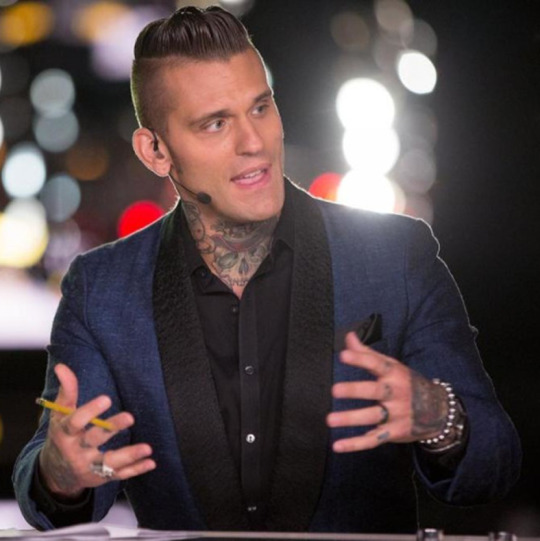



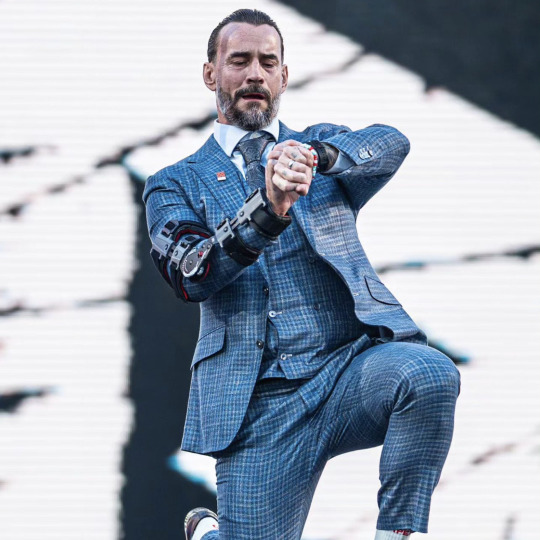





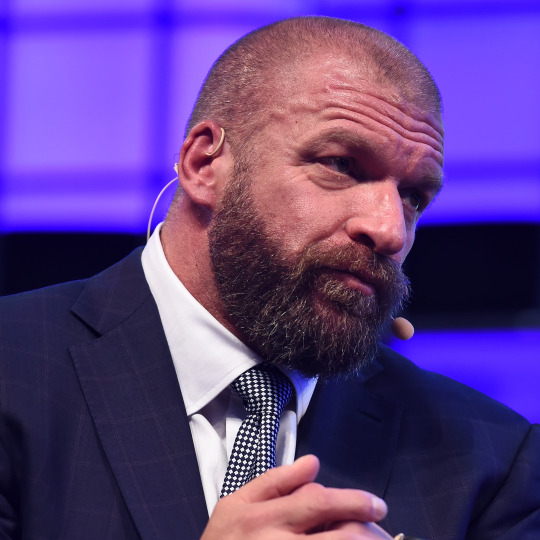
Also it gives me even more reasons to think about punk in suits <3
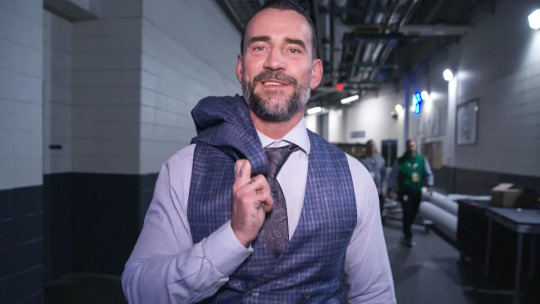
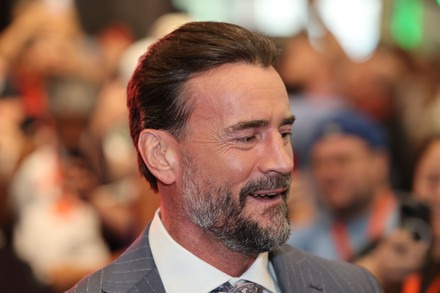
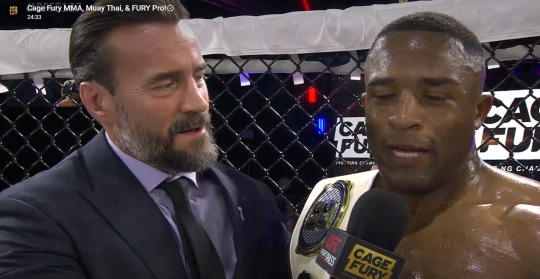
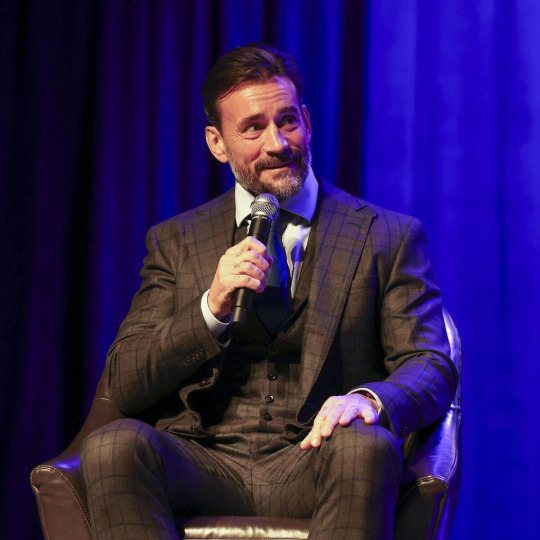





Also also if he were a war correspondent and had to go out into dangerous places, they'd make him wear gear which means more of this. vvv

Also CM Punk & Big E Langston are the two people I'm blaming for putting this AU in my head just so you know. Cos look at them!!
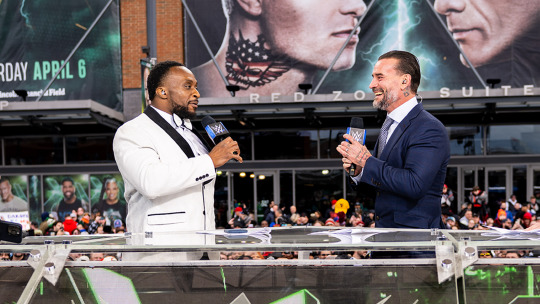


But also since punkintyre died, I've been reliving my sheamus/punk shipping days and just imagine sheamus waiting for his husband to come back from reporting in an active warzone and being worried for his safety (especially if he's been hurt before [whump time?]). And then all the excitement and relief when he gets back and giving each other special attention cos they were both so stressed and now they're just so happy to see each other again.
Also imagine Punk being inept with technology and needing help from tech savvy husband who's so proud that punk's finally learnt how to attach a file in an email. Punk probably sends Sheamus facebook minions memes and Sheamus despairs.

And then Punk excitedley explains all about battle strategies and war history and Sheamus excitedley explains back about the complexities of designing a self driving car or some shit. They're both just being massive nerds together. Even better when their interests overlap, like the design of tanks or something. Feel like they'd be talking for hours and everyone is like "guys come on, we have a show to run" but they're too busy with their hyperfixations (autistic sheapunk anyone? [is that what the ship name is??]).

Just think of the shipping potential!!

And this whole countdown show also was major inspo cos to me it just looks so much like a news show.
And these three just give me the vibe that E (being a political correspondent) would obviously be doing a show for the elections. And since law and war are both very close to politics, he'd get punk and jackie in to keep him company and the three would do an overnight show reporting on election results as they come in, chatting shit the entire time.

Btw I still don't know what this all means for the other WWE wrestlers. Defeats the point of using commentators and hosts if I also have all the wrestlers also being journalists. So maybe they can be the people featured in the news. All having "normal" jobs like politicians and military and scientists and shit. And these guys can be reporting on their nonsense and bullying them in interviews.
I feel like I could add more people to it, like having ring announcers as general news readers, and Shawn Michaels, Adam Pearce and Nick Aldis as editors or something. And I'm probably forgetting other people who hosted PLEs or were presenters on pre/post shows, and other commentators. So there'll be plenty more that could be added.
Sorry about the info dump but I needed to put this somewhere. I'm not the only one seeing the vision on this am I????
#i know this is such a weirdly specific au to do#but I haven't been able to get it out of my mind all weekend#also journalist sheapunk is giving me feelings right now#i need to dig a very deep hole and just get in it and die rn#the fluff is just getting too fluffy for my cold dead heart to handle#so sweet I'm gonna get diabetes#michael cole#corey graves#wade barrett#pat mcafee#big e langston#cm punk#jackie redmond#cathy kelly#the miz#r-truth#sheamus#triple h#newscaster au#just in case i end up needing a whole tag for it to be able to find my shit again later
18 notes
·
View notes
Text
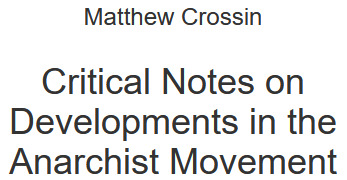
Anarchists and Neo-anarchists: Horizontalism and Autonomous Spaces
It is not uncommon, particularly in North America, to see anarchism defined as an ideology rooted in ‘direct democracy’, consensus decision making, and the maintenance of ‘horizontal’ (i.e., ‘non-hierarchical’) social relations, particularly in autonomous zones or public spaces.
This idea of anarchism is unusual in that it places at the centre of its definition an adherence to very specific forms of procedure and interpersonal behaviour while downplaying the political ends a ‘horizontal’ movement should be trying to establish. From this perspective, reclaiming public space as an opportunity to hold non-hierarchical public assemblies, where we can hammer out decisions by consensus, is, in itself, ‘anarchist’ – whatever the result of such processes.
This has little to do with the classical, mass-anarchist tradition and its politics of revolutionary socialism. It is, instead, an approach which is better described as falling under the banner of ‘neo-anarchism’ (or ‘small-a anarchism’). Neo-anarchism is a modern conception of anarchism largely informed by the feminist and peace movements of the 70s, the environmental movement of the 80s, the alter-globalisation movement of the 90s, and the Argentinian uprising of 2001; which coined the term horizontalidad (‘horizontalism’) to describe the movement’s rejection of representative democracy, the use of general assemblies to coordinate activity, and converting abandoned or bankrupt factories into cooperative businesses.
Take, for instance, the insistence by neo-anarchists on the use of consensus decision making. Though consensus (or ‘unanimity’, as it was typically called) was sometimes a feature of anarchist political organisations, and often seen as an ideal to work towards through comradely discussion, it was never a fundamental component of the anarchist movement. Anarchists have generally agreed that the appropriate form of decision making depends on the circumstances concerned, and frequently endorsed variations of majoritarian voting; particularly in mass organisations based on commonalities other than close-ideological affinity, such as unions. The focus for anarchists has generally not been the form of decision-making, but instead the principles of free association and solidarity. Furthermore, though anarchists have always stressed the right ofthe minority to be free of the majority’s coercion, it is even more important that the great majority be free of minoritarian rule or sabotage. As Malatesta wrote in his pamphlet Between Peasants: A Dialogue on Anarchy:
everything is done to reach unanimity, and when this is impossible, one would vote and do what the majority wanted, or else put the decision in the hands of a third party who would act as arbitrator, respecting the inviolability of the principles of equality and justice which the society is based on.
In response to the concern over minoritarian sabotage, he continues by asserting that such a situation would
[make it] necessary to take forcible action, because if it is unjust that the majority oppress the minority, it’s no more just that the contrary should happen. And just as the minority have the right of insurrection, so do the majority have the right of defense, or if the word doesn’t offend you, repression.[3]
As for ‘autonomous zones’ and the tactic of reclaiming public spaces (as seen in the Occupy movement) – here we have no connection to anarchism as a revolutionary tradition, and an example of a tactic which has repeatedly shown its inability to extract significant reforms, let alone revolutionise production and destroy the State.
The fundamental limitations of the ‘public occupation’ or ‘autonomous zone’ , and the defeats which have followed from these limitations, have led some former advocates of the strategy to make a notable transition from neo-anarchism to parliamentary politics. Though inexplicable to some outside observers, the change is easily understood when we consider neo-anarchism’s peculiar view of ‘direct democracy’, or ‘horizontally organised spaces’, as the defining characteristic of anarchism, and not a theory of libertarian revolution against the State and capital.
If we accept the idea of anarchism as proposed by the neo-anarchists, there is no fundamental contradiction between anarchism and involvement in parliamentary politics. If the political party is a directly democratic one, composed of social movements, and committed to horizontal interpersonal relations, what difference does it make if the decision made (ideally by consensus) is to campaign for political candidates, or even administer the State?
We have seen this with the so-called ‘Movements of the Squares’ in Europe. Activists who took part in the 15M (or ‘Indignados’) movement in Spain abandoned their dismissal of all politicians (“¡Que no nos representan!” – “They don’t represent us!”) with the formation of Podemos and various other ‘municipalist’ parties.[4]
A similar trajectory was followed by the anthropologist David Graeber towards the end of his life. Graeber – a figurehead of Occupy Wall Street and, prior to that, a participant in the alter-globalisation movement – apparently saw no contradiction between his professed (neo-)anarchism and his efforts to join the British Labour Party in support of Jeremy Corbyn. In particular, Graeber was enthusiastic about the Labour-affiliated organisation Momentum; an outgrowth of the Corbyn leadership campaign, which he argued constituted a unique attempt to fuse a radical social movement with a traditional parliamentary party.[5]
More recently we have witnessed the absurdity of a self-proclaimed ‘libertarian socialist’, Gabriel Boric (who touts his association with Chile’s radical student movement), ascending to the presidency in the aftermath of a militant popular uprising.
The damage caused by these supposedly ‘unique’ attempts to translate the ‘horizontalism’ of neo-anarchism into the party-form – which, in reality, hardly differs from the historic approach offered by Marxists as an alternative to anarchism – has been outlined well elsewhere, and there is no need to go over the details here.[6] It suffices to say that in each case there was bureaucratisation, accomodation with the necessities of administering the capitalist state (or even just campaigning to administer it), and zero empowerment of workers against the bosses.
The reality is that there is no way to fully ‘prefigure’ anarchy and communism through ‘directly democratic’ spaces of ‘autonomy’. Anarchism requires a specific anarchist movement and anarchist practice. Though we must certainly organise ourselves from the bottom up, with a consistent federalist structure, we can not simply bring about our ideal by ‘living anarchisticly’ or relating to one another as ‘horizontally’ as possible. Similarly, the content of anarchism can not be limited to the structure of our movement – its content of revolutionary class struggle must be maintained. To quote Luigi Fabbri:
If anarchism were simply an individual ethic, to be cultivated within oneself, and at the same time adapted in material life to acts and movements in contradiction with it, we could call ourselves anarchists and belong to the most diverse parties; and so many could be called anarchists who, although they are spiritually and intellectually emancipated, are and remain, on practical grounds, our enemies.But anarchism is something else… proletarian and revolutionary, an active participation in the movement for human emancipation, with principles and goals that are egalitarian and libertarian at the same time. The most important part of its program does not consist solely in the dream, which we want to come true, of a society without bosses and without governments, but above all in the libertarian conception of revolution, of revolution against the state and not through the state… [7]
#anarchist movement#autonomous zones#class struggle#criticism and critique#dual power#Elections#horizontality#insurrection#Notes#organization#Red and Black Notes#riots#social change#autonomy#anarchism#revolution#climate crisis#ecology#climate change#resistance#community building#practical anarchy#practical anarchism#anarchist society#practical#daily posts#communism#anti capitalist#anti capitalism#late stage capitalism
31 notes
·
View notes
Text
‘You are killing us’: Mariana survivors face ill health, lost culture and a long wait for justice
When a dam burst eight years ago in a Brazilian mining town, the toxic mud swept downriver, crushing all before it. Affected communities are still fighting in the courts – and mourning a way of life that has disappeared for ever
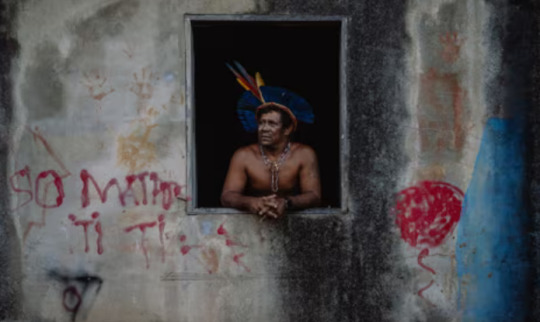
Marino D’Ângelo Júnior regularly takes antidepressants and medication to help him sleep. A former resident of Paracatu, a district of the city of Mariana in the Brazilian state of Minas Gerais, the 54-year-old says he has lost his sense of self since 60m cubic metres of mining waste flattened his town, forcing him to live in a rented property near the centre of an environmental disaster that shocked the world eight years ago.
D’Ângelo is one of the survivors of the collapse of the Fundão tailings dam near Mariana. Almost a decade on, the people affected by Brazil’s worst environmental tragedy still await justice as they live under the shadow of the toxic mud that swept away life as they knew it.
“The collapse of a dam isn’t what you see on TV – the river of mud destroying things,” says D’Ângelo. “A dam failure entails an infinity of invisible ruptures. The rupture of connections, family links, communities, histories, dreams.”
D’Ângelo used to own a herd of 60 dairy cows before the incident but he began to sell them off as he found himself unable to work properly, which led to him being “forced into poverty”. A member of the Commission for People Affected by the Fundão Dam, D’Ângelo holds the mining companies responsible for the disaster and the subsequent neglect of the affected populations who still struggle with losing their livelihoods and way of life.
The dam – which was managed by Samarco, a joint venture between the Brazilian mining company Vale and the Anglo-Australian company BHP – collapsed on 5 November 2015, and caused mining waste to flow nearly 700km (430 miles) down the Rio Doce into the Atlantic Ocean, devastating everything in its path.
The torrent of toxic sludge buried villages, killed 19 people and left thousands more homeless. Nearly a decade later, hundreds of thousands of people continue to suffer the effects daily, in the contaminated soil unfit for agriculture, the diseased fish they catch in the polluted river, and the breakdown of their communities and cultural traditions.
No one has yet been held accountable for the socio-environmental disaster. BHP, Vale, Samarco and eight other defendants stand accused of environmental crimes in a Brazilian court case that has been dragging on for seven years. They are due to face a judge for questioning this month.
Separately, about 700,000 people are suing BHP in a UK court, seeking £36bn in reparations in English legal history’s most significant group claim. BHP denies liability.
Continue reading.
#brazil#brazilian politics#politics#environmental justice#environmentalism#indigenous rights#mining#mariana dam burst 2015#mod nise da silveira#image description in alt
48 notes
·
View notes
Text
#recently read November 23
The Golem of Brooklyn by Adam Mansbach. A stoned art teacher accidentally creates a golem who decides his mission is to stop an upcoming alt right rally.
The Last Unicorn by Peter S. Beagle. Finally got around to this. A unicorn seeks the rest of her people and is forever changed by the mortal world.
How Can I Help You? by Laura Sims. A failed novelist working at a public library realizes her coworker was a killer nurse - and becomes fascinated with her as a topic for a new novel.
Last to Leave the Room by Caitlin Starling. While investigating why her city has started sinking, scientist Tamsin finds a new door in her basement - and then her doppelganger walks through it.
A Haunting in Hialeah Gardens by Raul Palma. Buried in debt, nonbeliever Hugo works as a babalawo. Then he's given a chance to clear his debts if he can end the very real haunting of his debt collector.
Before the Streetlights Come On: Black America's Urgent Call for Climate Solutions by Heather McTeer Toney. An environmental justice book discussing the climate crisis' disparate racial impacts.
The Centre by Ayesha Manazir Siddiqi. Anisa is referred to a secretive language-learning program with miraculous results... and a sinister secret raising questions of translation, appropriation, and power.
The Best American Science Fiction and Fantasy 2023 ed. by R.F. Kuang.
30 notes
·
View notes
Text

Parisians vote in favour of tripling parking costs for SUVs (Angelique Chrisafis, The Guardian, Feb 04 2024)
"Hidalgo had previously described the move to curb the presence of SUVs through raising parking prices as “a form of social justice”.
She said the aim was to deliberately target the richest drivers of expensive, heavy and polluting cars who had not yet made changes to their behaviour to address the climate crisis.
The new parking tariffs could come into force at the start of September.
The cost of on-street parking for an SUV or 4x4 car would rise to €18 (£15) an hour in the centre of Paris and €12 an hour in the rest of the city.
The prices will apply to vehicles weighing more than 1.6 tonnes with a combustion engine or hybrid vehicles, and more than 2 tonnes for electric vehicles.
The move will not apply to Paris residents’ parking.
Tony Renucci, director of the air quality campaign group Respire, said: “The result of the vote is a victory for Paris residents’ quality of life.”
He added that Paris was sending a message that “the presence of these monsters on wheels was no longer desirable on our streets”.
Emmanuel Grégoire, Paris’s deputy mayor, posted on X as voting began: “Heavier, more dangerous, more polluting … SUVs are an environmental disaster.”"
10 notes
·
View notes
Text
When environmental defenders are tried in future they will be barred from giving evidence of climate impacts to the jury to explain their motives, writes Tim Crosland, director of climate justice charity Plan B Earth.
6 notes
·
View notes
Text
Trends in Kitchen Design: The Rise of Colored Quartz Countertops
Stepping into a newly renovated kitchen can evoke a lot of memories. It could light up your eyes if you spend too much time in a kitchen. It would be true if they are drawn to the stunning blue-gray quartz countertop across the island kitchen.
Run your hand along the smooth, cool surface of the countertop and you will immediately feel that it does justice to your kitchen and your own persona.
You will not be alone in making this choice of a colored quartz manufacturers in india. In 2024, homeowners are embracing a colorful revolution in their kitchens. It is certainly about aesthetics and also about creating unique spaces. The colors are eye-popping with deep emerald greens to warm terra cottas and you can certainly hope your kitchen surface to stand out.
Historically, kitchen countertops have undergone several changes. You would find laminate surfaces of the 1950s to the granite boom of the 1990s with each era having its defining material. Today, we're witnessing a shift towards quartz, particularly colored quartz, as homeowners seek both functionality and aesthetic appeal.
Let's explore the trends that are putting these vibrant countertops front and centre in transforming kitchens.
Why Colored Quartz Countertops Are Trending in 2024
Unparalleled Versatility Colored quartz countertops offer a lot of color options, from subtle earth tones to bold, vibrant hues. This versatility allows homeowners to express their style while complementing existing elements of the kitchen.
Durability Meets Design Quartz is known for its durability and low maintenance. Colored quartz offers practical benefits while adding a design element that was not possible easily with natural stone options.
Sustainability Factor As eco-consciousness grows, colored quartz countertops appeal to all people who are environmentally mindful. Many prefer recycled materials with lower environmental impact compared to natural stone being mined for their countertops.
Perfect for Modern and Traditional Kitchens Alike The adaptability of colored quartz is one of the main reasons for its popularity. It can align well with lots of kitchen styles.
The Impact on Kitchen Aesthetics
Colored quartz countertops are revolutionizing kitchen aesthetics in several ways:
Creating Focal Points A boldly colored quartz countertop can serve as a stunning focal point, anchoring the entire kitchen design.
Enhancing Color Schemes These countertops allow for more cohesive color schemes, tying together various elements of the kitchen from cabinetry to backsplashes.
Brightening Spaces Lighter colored quartz can help brighten smaller kitchens, making them appear more spacious and inviting.
Adding Depth and Texture Many colored quartz options come with unique patterns and textures, adding depth and interest to the kitchen surface.
Choosing the Right Colored Quartz for Your Kitchen
When selecting colored quartz countertops, consider:
Lighting: How natural and artificial light interact with the color.
Cabinetry: Ensure the color complements or contrasts well with your cabinets.
Overall Theme: Choose a color that aligns with your kitchen's overall design theme.
Longevity: Opt for colors that you'll enjoy for years to come.
The Future of Colored Quartz Countertops
As technology advances, we can expect even more innovations in colored quartz countertops. Future trends might include:
Smart Surfaces: Quartz countertops with integrated technology for cooking and food preparation.
Customizable Patterns: Advanced manufacturing techniques allowing for more personalized designs.
Eco-Friendly Options: An increase in sustainable and recycled quartz options.
Colored Indian quartz manufacturers represent more than just a passing trend. They represent the evolving nature of kitchen design. By combining practicality with aesthetic appeal, they offer homeowners a chance to create truly unique and personalized kitchen spaces. Expect these versatile surfaces to dominate kitchen design trends, bringing color, durability, and style to homes worldwide.
FAQs
Are colored quartz countertops more expensive than traditional options?
While prices can vary, colored quartz countertops are generally comparable in cost to high-end granite or marble. The exact price depends on the brand, color, and complexity of the installation.
How durable are colored quartz countertops compared to natural stone?
Colored quartz countertops are highly durable, often more so than natural stone. They're resistant to scratches, chips, and stains, and don't require sealing like granite or marble.
Can the color of quartz countertops fade over time?
High-quality colored quartz countertops are designed to maintain their color for many years. However, prolonged direct exposure to sunlight may cause some fading over time. It's best to avoid placing them in areas with constant direct sunlight.
How do I clean and maintain my colored quartz countertop?
Cleaning is simple – use warm water and mild soap for daily cleaning. For tougher stains, a non-abrasive cleaner designed for quartz surfaces can be used. Avoid harsh chemicals or abrasive cleaners to maintain the color and finish.
Can I cut directly on my colored quartz countertop or place hot pans on it?
While quartz is durable, it's best to use cutting boards to prevent dulling your knives and potentially scratching the surface. As for heat, always use trivets or hot pads. Sudden temperature changes can potentially damage the surface or affect the color.
2 notes
·
View notes
Text
A new BIRN report highlights how recent changes to legal provisions in Bosnia and Herzegovina’s two political entities are shrinking freedom of speech in the online space.
The research notes that social networks, especially Facebook, played a crucial role in mobilising and uniting citizens in protests for justice and against environmental pollution.
“However, this mobilisation was met with methods to silence and discredit protesters, including smear campaigns, law amendments restricting freedom of expression, and online surveillance by authorities and police,” the report says.
Starting in 2012, with the Save Picin Park protests in Banja Luka, Republika Srpska’s administrative centre, activists used these platforms to share information, organise actions and mobilise large numbers of people.
Facebook groups sharing information and coordinating activities gathered 40,000 to 100,000 members, with posts widely shared online.
“The use of social networks by activists initially was spontaneous but increasingly became more organised and strategically planned, as seen in the case of the protests for the Kasindolska River in 2020,” the report adds.
The “Justice for David” protests, over the unresolved death of a young man in Republika Srpska, also spawned a Facebook group with some 100,000 members.
But the research charts a decrease in internet freedoms following the 2020 and COVID-19 pandemic, when authorities both in Republika Srpska and the Federation of Bosnia and Herzegovina issued fines for people sharing opinions online.
The report also notes that recent changes to the Criminal Code of Republika Srpska, which again made defamation a crime, have negatively affected people who are “more cautious now when posting content online, while activists use more secure communication channels”.
“Smear campaigns, law amendments and attempts to introduce more restrictive measures had an impact on freedom of expression online in the whole country,” the report concludes.
Read the full report here.
2 notes
·
View notes
Text
Greek Mayor Racially Abuses & Threatens A Romani Mother and Children Before Spraying Them With Water
05/21/2024.
By Judit Ignácz
The European Roma Rights Centre (ERRC) strongly condemns the recent actions of Perama’s Mayor, Giannis Lagoudakos, as captured in a disturbing video that was widely circulated online. The ERRC requests competent authorities to investigate Mayor Lagoudakos's behaviour and inspect the actions and responsibilities of the local police.
In the video, Mayor Lagoudakos is seen engaging in a heated confrontation with a Romani family, threatening a Romani woman with jail and separation from her children, equating their living conditions to those "for pigs" and directing a stream of water from a municipal tank at the Romani family. Lagoudakos can be heard saying: “Give me the hose here,” and a woman responding: “What if my children get hurt?” His response: “If you interfere, you will go to jail!” the mayor of Perama shouts angrily in the video footage. And he adds: “I will tell you what the babies will suffer from. The kids will end up in a shelter, and you will end up behind bars. This barn [nods towards the tent] is not for babies but for pigs. So, it’s not far from cholera…”
The mayor shamelessly shared the video about the incident on his personal Instagram account, captioning it “Elimination of unsanitary conditions.” His aggressive behaviour and derogatory, dehumanizing comments are a blatant manifestation of racial discrimination, fuelling prejudice against Romani communities. His actions violated their human rights and the basic principles of human dignity and respect, as well as inciting hate, and stigmatising Roma, who are already in marginalised and vulnerable conditions.
“The ERRC strongly condemns this incident and calls upon the public prosecutor to launch an ex officio investigation into the mayor's statements and alarming actions, as the victim is visibly a Romani woman. Considering the high likelihood his actions are motivated by racial bias, this crime should be prosecuted as an anti-Roma hate crime” said Jonathan Lee, the ERRC’s Advocacy & Communications Director.
The ERRC and other Greek civil society organisations are formally addressing Greek authorities, urging them to take immediate action against such apparent disregard for human rights, including filing a criminal complaint before the Prosecutor of First Instance of Athens to ensure that this matter is taken seriously, and that justice is served.
Housing of Roma in Greece
There are at least 265,000 Romani people in Greece according to figures cited by Minority Rights Group. In recent decades, the Roma have faced forced evictions by the authorities, leaving whole settlements evicted over the years. In 2007, over 100 Romani families were evicted from their decade-long residences in Aghiou Polykarpou Street, Athens, without alternatives from authorities. Denial of the right to adequate housing is a major issue faced by Romani communities.
Data from 2021 documented by the Ministry of Labour and Social Affairs’ ‘General Secretariat of Social Solidarity and Fight Against Poverty’ found that 87% of Roma in segregated living areas are forced to live in deprivation, in prefabricated homes, with inadequate infrastructure, and a lack of access to drinking water, electricity, heating, and a toilet in their homes. Environmental racism against Romani communities is structural and tied to other forms of racially motivated discrimination and exclusion.
On 25th March 2014, the ERRC filed a collective complaint against Greece under the Revised European Social Charter for failing to respect Article 16 of the Charter, taking into account that Roma did not effectively enjoy their right to housing, that national legislation discriminated against Roma in housing matters, and that Roma were often subject to forced evictions.
Mayor Lagoudakos’ duty should be to ensure and provide adequate, decent living conditions to vulnerable groups and Romani communities instead of shaming and blaming them for living in poverty and marginalization. For the 2014-2020 period, Greece was allocated a total of €15.11 billion in EU funds, out of which at least 28.1% should have been spent on the European Social Fund, with at least 20% of that going towards promoting social inclusion and combating poverty. The racialised poverty experienced by Romani families is an enduring reminder of the failure of Greek politicians and policymakers to provide Greek citizens with basic infrastructure and housing.
Hatred Trending in Greece
There is significant cause for concern over the growing trend of hate crimes against Romani communities, as well as the pattern of police killing Roma in Greece in recent years.
In 2023, Greek police shot an unarmed 17-year-old Romani boy, Christos Michalopoulos, after a car chase in the town of Thebes, north of Attica. According to media reports, the car, with four passengers—two boys and two girls aged 15-17—failed to stop when ordered. The police claim that one of the underage passengers tried to snatch the policeman’s gun, which 'went off' killing the boy. The victim’s brother claimed that it was the policeman who fired the gun.
In 2022, an unarmed 16-year-old Romani boy, Kostas Frangoulis, died of his wounds after being shot in the head by a police officer during a chase over an unpaid 20 euro gas station bill. The fatal shooting sparked three nights of rioting and protests in Greece.
In 2021, in Perama, seven Greek motorcycle police officers in pursuit of a stolen car opened fire on the three unarmed Romani occupants of the vehicle, killing an unarmed 18-year-old, Nikos Sabanis, and seriously wounding a 16-year-old. A video recording distinctly reveals 30 to 40 shots, and a radio conversation between the police operational center and the attending officers shows that the officers identified three Roma in the vehicle. The police press release claiming injuries to seven officers, a 20-year-old deceased with a criminal record, and minor injuries to a shot minor were disproven. In reality, no officers were hurt; the deceased was an 18-year-old without a criminal record, and the 16-year-old boy was seriously injured. In an open letter to the Greek Prime Minister, the European Parliament Anti-Racism and Diversity Intergroup (ARDI) and the ERRC urged the authorities to investigate the possibility of racial motivation behind the disproportionate use of force, expressed concern at the national news coverage which triggered a wave of anti-Roma sentiment, with the prosecutor referring to Roma as a ‘social menace’.
In 2019, a 52-year-old Romani man was murdered in Solomos, Greece. According to police, the incident happened when two Romani men, aged 52 and 54, allegedly tried to steal some chickens from the property of a 35-year-old non-Romani man. The owner of the property saw the two men in his yard and opened fire on them with a hunting rifle, killing the Romani man.
In 2018, a 13-year-old Romani girl was shot dead in a racist incident in the camp near the town of Amfissa when a 34-year-old butcher drove into the camp and fired a shotgun from his truck. The bullet allegedly missed its intended victim and struck the thirteen-year-old girl.
In 2017, several human rights organizations (the ERRC, Greek Helsinki Monitor (GHM), Solidarity Now, Minority Rights Group Greece (MRG-G), and the Coordinated Organizations and Communities for Roma Human Rights in Greece (SOKADRE))—a network of 30 Roma communities and 5 Greek NGOs working on Roma rights—called for immediate action to ensure the safety of Romani families in Menidi, Athens, after angry mobs stormed a Roma neighborhood following the tragic death of an 11-year-old boy who was killed by a stray bullet, which according to the media, may have been fired by a Romani person. A video posted online by far-right groups shows arson attacks on the home of the Romani suspect, with people marching and chanting slurs such as “gypos, cunts, pigs, murderers.” The video ends with a threat of more violence against the Roma in Menidi. Despite the threats of further violence, no arrests were made.
Across Europe, politicians and public figures promote racist public statements, hate speech, and incitement of hatred against Roma. Hate speech often manifests into hate crimes, the Greek MEP Giannis Lagos was sentenced to 13 years in prison for directing Golden Dawn, a far-right party described by Greek courts as ‘a criminal organisation’ that has been linked to several acts of political violence. Utilizing his immunity as an MEP, Lagos left Greece for Brussels on the day of the verdict to avoid arrest.
The ERRC stands in solidarity with Romani communities in Perama and throughout Greece. The ERRC and its partner organisations remain committed to fighting against racial discrimination and ensuring that the rights and dignity of all individuals are respected and protected. The responsibility of the authorities to respond and prevent such incidents is integral to promoting an inclusive and respectful society. They can no longer ignore or normalise the consistent occurrence of hate crimes against Romani communities in Greece.
3 notes
·
View notes
Text
By: Arty Morty
Published: Apr 28, 2024
“‘Woke’ isn’t dead — it’s entered the mainstream” says Gaby Hinsliff, a columnist at (where else) The Guardian. To which I ask, what’s the difference? Any music nerd will tell you: a countercultural movement is dead the minute it goes mainstream.
Take the early ‘90s “grunge” phenomenon. It lost its edgy appeal once the look was subsumed into the suburban retail fashion supply chain, and the fad quickly passed after that. “Alternative music” was a misnomer by the mid-’90s: in what way was it “alternative” when it dominated the Billboard charts? By 1997, the corporatized counterculture that had come to define the era was lampooned on (where else) The Simpsons, when they introduced Poochie the surfin’, rappin’ dog “with an attitude,” a crass attempt to remain “hip with the kids” in the satirically self-described “worst episode ever.”

[ “Wokeness” is the worst episode of political counterculture, ever. ]
“Wokeness” is certainly a countercultural phenomenon. Like “alternative,” the term “woke” only makes sense relative to the mainstream: to describe people who position themselves politically far to the left of whatever ideas have already been embraced by the establishment. So it’s more of an intensifying adjective to other causes and issues rather than a coherent political worldview in its own right. Being against racism or homophobia by itself isn’t woke; being way more against racism than everyone else, and against all the possible queerphobias — even the ones you normies haven’t even heard of is. Being in favour of making the criminal justice system more fair isn’t woke because it isn’t distinct enough from the common sense view. To make it woke, you have to be in favour of doing away entirely with the prisons and the police. You get the idea.
“Woke,” both the word and the movement, always had not-so-subtle transcendental, spiritual connotations: a shade adjacent to nirvana.
This is a point that Hinsliff struggles to grasp. In her column she tries to define “woke” as, variously:
“the broader push for social, racial and environmental justice”
“the idea of being more open to sometimes uncomfortable challenge from minority perspectives that were previously suppressed”
“saving the planet”
“uncovering forgotten histories”
“inclusivity at work”
“ ‘be kind’ ”
“getting more used to acknowledging conflicting views based on different life experiences”
To which Ophelia Benson (who else) keenly observes that, for starters, Hinsliff is mixing up “radically different things”:
Social justice is not the same thing as “environmental justice” and climate change isn’t fundamentally political. What to do about it is politicized (but shouldn’t be), but the change itself is not responsive to whether we shout “fascist!” or “wokerati!” at it. Those are two radically different things, so there’s no point in calling the pairing of them anything.
This is the inevitable path of a movement that exists solely to be more activist-y than everyone else: the condensing of all ostensibly progressive causes into a great, faceless ideological black hole. The logical endpoint of the moral-bidding-war meltdown of “wokeness” is a singularity: a state of mind which, to those inside, is a realm of infinite, utopian virtue. To everyone else it looks literally pointless. “Woke,” both the word and the movement, always had not-so-subtle transcendental, spiritual connotations: a shade adjacent to nirvana.
(Speaking of grunge!)
That tracks with the direction “wokeness” is going: one big nondescript fist of self-righteousness.

[ Until recently, a mural on Toronto’s gay village community centre, The 519, depicted a leatherman in fetish gear, a lesbian in a wheelchair, and a teen girl binding her breasts — a perfect encapsulation of “queer” activist extremism. ]
Here’s a little anecdote, an example of wokeness subsuming everything ostensibly progressive until it ends up meaningless and useless. About 20 years ago, the city-funded community centre at the heart of Toronto’s gay village put up a mural which loomed over the neighbourhood. It depicted, along with a lesbian in a wheelchair, a middle-aged leatherman clad in fetish gear, and a teenage girl straining to crush her breasts into a binder. The message was clear: adult men’s fetishes and distressed teen girls’ trans identities would now be central parts of the community’s activism.
And sure enough, that’s exactly what the community centre focused on in the ensuing years, as the activists shifted over to “queer theory,” with its emphasis on sexual permissiveness and hostility to biological sex distinctions.
(To be clear, I have no beef with the gay leather scene. I just don’t think it’s in need of publicly funded support, and I don’t think leather daddies are in any way marginalized. Binders, on the other hand, I have all kinds of beef with.)
Credit where it’s due: they do pick apt murals. The next shift among “queer” activists was to embrace all-encompassing, universal, woke ideals. That’s been reflected in the community centre’s new mural, which recently replaced the one with the lesbian, the leatherman, and the trans “boy.” Just as the first mural presciently captured the shifting cultural mood inside the building, so too does the second: now it’s a raised fist — a universal symbol of righteous protest — filled in like a quilt with patches that depict the “progress” flag, various shades of the colour brown (skin tones, one presumes), animal hide prints (animal rights?), blue waves (the environment), and miscellaneous patterns whose symbolism I can’t decipher. That tracks with the direction “wokeness” is going: an incoherent melding of anything conceivably virtuous into one big nondescript fist of self-righteousness.

[ The Toronto gay village community centre’s new mural is one big nondescript fist of self-righteousness — a perfect encapsulation of “wokeness.” ]
I’ll bet that the people who work inside the community centre think they’re at the epicentre of all virtue now, and that their noble mission has naturally expanded from when it served gays and lesbians in the time of rampant AIDS and gay bashing, to LGBT outreach, to LGBTQ+ propaganda, to 2SLGBTQQIA++ hysteria, and now at long last they’ve arrived at righteousness in its true, pure form, having transcended all individual causes. Woke nirvana.
But I know for a fact that the gay people who live and work in the neighbourhood have little or no use for the community centre’s services anymore, because it’s strayed so far from the community it was founded to support. I am one such person, and I wouldn’t darken their bloody doorstep. My own “community centre” has nothing to offer my community now but insults and condescension. In its lurch to woke extremism, it’s become not just useless to us, but hostile to us, and in so doing it’s set itself up for its own undoing.
That’s a sentiment we’re seeing across society: people are fed up with the extremists.
To go back to Hinsliff’s Guardian article, does this mean that wokeness is being embraced by the mainstream, or killed off by it? In the aftermath of the Cass review, Hinsliff can’t dispute that there are “tough lessons to be learned” about moral absolutism “that can be fatal to progressive causes.”
But Gaby, I shout at the screen, it’s the moral absolutism that’s being rejected, not the causes themselves. People cared about the environment and gay rights and gender nonconforming people and women’s rights and all the rest before “woke” came along, and they’ll continue to care about all of it long after “woke” is gone.
The moral absolutism is the wokeness.
Hinsliff panders to the Guardian readership by offering a self-flattering alternative view, which says that the woke movement is moving along just as it always intended, having more-or-less already achieved its true goal, which was only ever to gently nudge the Overton window, to take the establishment a baby step to the left, rather than smash the whole system and burn as many witches as it could find:
Woke is no longer wildly anti-establishment; increasingly it’s becoming the boring old establishment, to the point where teenagers will doubtless soon be ripping it apart on TikTok, since turning into baby conservatives is the only thing really guaranteed now to confound their parents. It is radicalism that initially breaks down doors. But what usually ends up walking through them is a version with the sharp edges smoothed off that most people find they can live with, and that’s where woke is heading now. It’s not dead. But it is evolving, and that’s how living things ultimately survive.
Now, you might argue that this is a difference which makes no difference, the distinction between “wokeness is dying because the mainstream are fed up with woke people’s extremism” and “wokeness is actually secretly winning by merging itself into the mainstream and changing it a bit for the better.”
But that’s wrong. There’s a big distinction, and it’s an important one. When we look back, one of these views will put the people behind wokeness in their rightful place in history alongside the McCarthyites and the lunatics of the Salem witch trials: villains at the heart of some of our darkest, most terrible chapters in history. The other view, which Hinsliff is pushing, will paint the people behind wokeness as heroes, whose acts of extremism were merely noble sacrifices “to break down doors” for the greater good of progress.
To which, and I absolutely hope that someone manages to get this in front of Gaby Hinsliff so that you, Gaby, can read these words yourself:
Fuck you.
The woke activists who sent death threats to Kathleen Stock, to JK Rowling, and to countless other women for simply speaking their minds and telling the truth? They are not heroes, Gaby. They do not deserve praise for “breaking down doors.” Some of these activists literally wanted to kill women.
The countless vulnerable young people — often gay, autistic or both — who were coaxed by woke people to undergo unnecessary, experimental, irreversible body modification surgeries? They’re victims, Gaby. Their victimhoods, their stories, are what need to take historical precedence above all else.
You blithely dismiss the victims’ plight, the ongoing pain that they will suffer for the rest of their lives, as collateral damage.
And there are so many more victims — too many to list them all, but here are some: women residing in prisons and shelters; women who just want to use public washrooms and changing rooms in peace, dignity and safety. Lesbians and gay men who just want to socialize as a community and maintain their sexual boundaries. Academics who dare to raise questions. Employees in all kinds of workplaces, afraid to say the “wrong” thing, or fired for having done so.
Graham Linehan, for fearlessly saying what needs to be said, when almost no other celebrity or media figure has had the guts to.
And me. I’m a victim, too. I won’t be getting my friends back, the ones who threw me out of their lives in my most difficult time of need, after I spoke up for gay rights. And I won’t be returning to work in the gay community or the arts community, both of which I was a part of for so long.
You spit in all of our faces when you characterize our woke tormentors as the real heroes.
This is surely just the beginning of a widespread attempt to put a positive spin on the woke cult’s dying legacy by those who were complicit in its ugly doings.
The Guardian always turned a blind eye to the savagery routinely deployed by the woke against perfectly decent people — the paper still employs the profoundly detestable Owen Jones, for example. The cruelties doled out by men and women like Jones never served the noble causes they purported to; they were always mere ploys to put themselves in a more advantageous position on the woke playing field.
I think everyone’s starting to see that now. I don’t think the spin doctoring ploy is going to fly. No one’s going to look back at “woke” with any fondness or gratitude.
If anything, people will want to move on and forget it ever happened. I can understand that.
But me, I have a different plans. I don’t intend to let people ever forget the victims or the culprits of this mass psychosis.
To the woke assholes who were so cruel in their performative commitment to “social justice”: you’re going to have to face some social justice of your own, some day soon.
youtube
#Arty Morty#woke#wokeness#cult of woke#wokeness as religion#wokeism#authoritarianism#counterculture#moral absolutism#social justice#religion is a mental illness#Youtube
4 notes
·
View notes
Text
Happy Belated Birthday 🎂 🥳 🎉 🎈 🎁 🎊 To 1 Of The Greatest Irish Actors In Cinema 🎥 History
Born On May 16th, In Drogheda, Louth County, Ireland 🇮🇪
After leaving school at age 16, He began training in commercial illustration and went on to attend the Drama Centre in London for three years. Following a stage acting career, he rose to popularity in the television series Remington Steele (1982–1987). After the conclusion of the series, He appeared in films such as the Cold War spy film The Fourth Protocol (1987) and the comedy Mrs. Doubtfire (1993). After achieving worldwide fame for his role as James Bond, He took the lead in other major films including the epic disaster adventure film Dante's Peak (1997) and the remake of the heist film The Thomas Crown Affair (1999). Since leaving the role of Bond, he has starred in films such as the political thriller The Ghost Writer (2010), the action fantasy Percy Jackson & the Olympians: The Lightning Thief (2010), the action spy thriller The November Man (2014), and the comedy musical Mamma Mia! (2008) and its sequel Mamma Mia! Here We Go Again (2018).
In 2022, He played Kent Nelson / Doctor Fate in the DC Extended Universe film Black Adam.
He has received two Golden Globe Award nominations, for the miniseries Nancy Astor (1982) and for the dark comedy film The Matador (2005). In 1996, along with American film producer Beau St. Clair, he formed a Los Angeles-based production company called Irish DreamTime. He is also known for his charitable work and environmental activism. In 1997, He received a star on the Hollywood Walk of Fame for his contributions to the film industry. In 2020, he was listed at No. 15 on The Irish Times' list of greatest Irish film actors.
Please Wish This Dedicated & Distinguished Irish Actor A Happy Belated Birthday 🎂
You Know Him & You Love Him
THE 1 & THE ONLY
MR. PIERCE BRENDAN BROSNAN
HAPPY 70TH BELATED BIRTHDAY 🎂 🥳 🎉 🎈 🎁 🎊 TO YOU MR. BROSNAN & HERE'S TO MANY MORE YEARS TO COME #PierceBrosnan #JamesBond #RemingtonSteele #DoctorFate
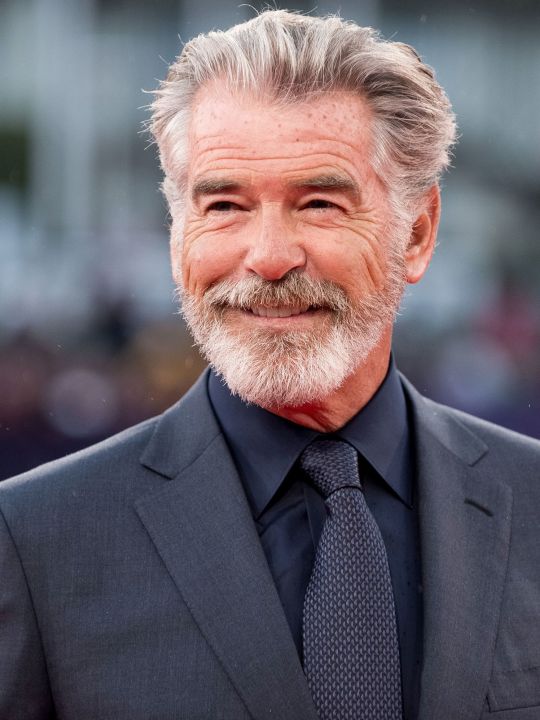
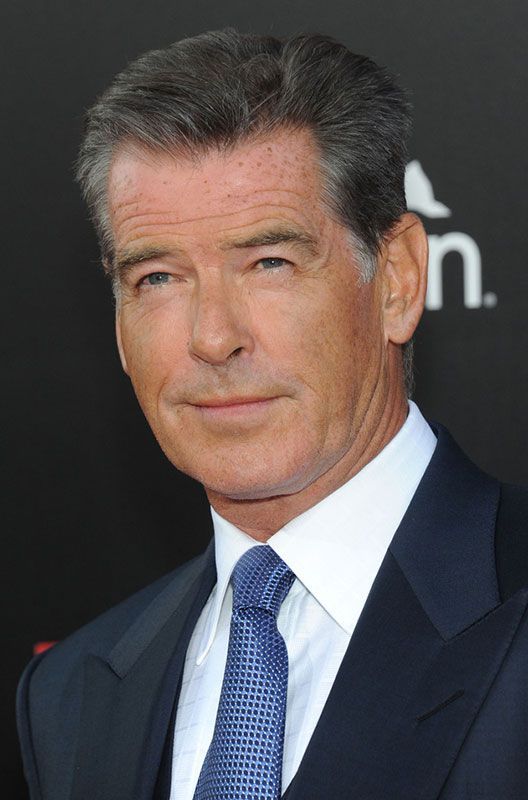
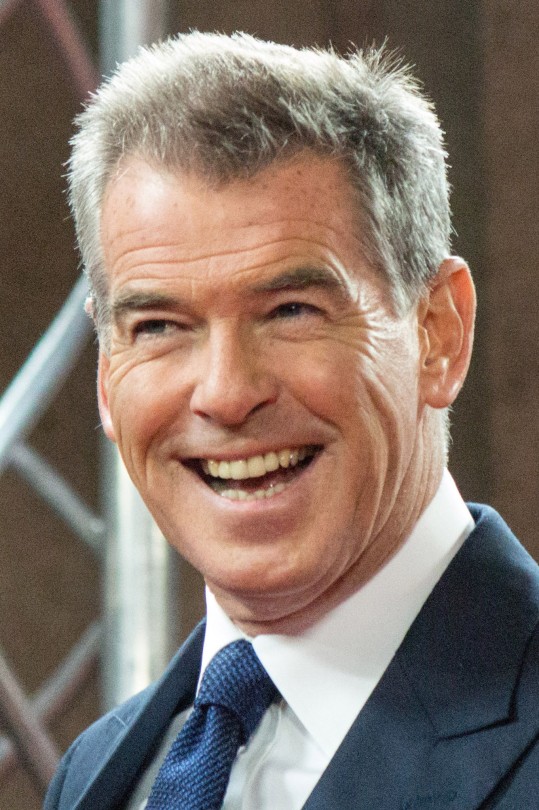
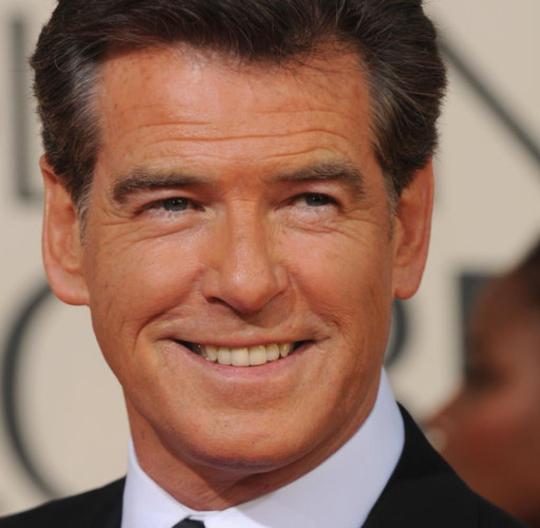

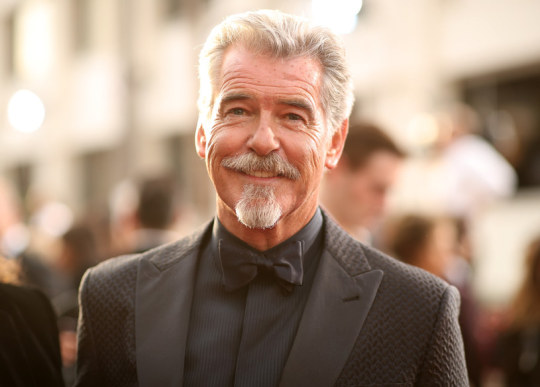

8 notes
·
View notes
Text
Nature Interpretations Role in Environmental Sustainability
Nowadays, it is becoming harder and harder to maintain a positive outlook on the future of our species and the planet. Admittedly, I am fearful for what might become of our ecosystems and future generations of people in light of the huge environmental and social crises that we face in the modern day. However, my personal ethic as a nature interpreter is centred around a sense of hope that as a human collective, we can better support one another and our surrounding environment today and in the future.
I feel that human-caused environmental issues have been and continue to be fuelled by our psychological and physical disconnectedness and isolation from our natural environment. As an interpreter, I want to help individuals to re-establish and strengthen their relationship with nature, to facilitate a deeper understanding and appreciation for the interconnectedness of all life on earth and our dependence on the health of our surrounding ecosystems.
My background in the International Development and Human Geography discipline has also deepened my belief in the importance of recognising the intertwined nature of environmental and social justice issues; we cannot address one without the other. Thus nature interpretation, particularly in Western nations, must reinforce the importance of understanding that our actions here have environmental and social consequences upon not only our local, but global environment. As Beck et al., (2018) highlight, nature interpretation must grapple with critical issues in our past, present and future on multiple scales; this includes the continued legacies of colonialism that persist in our current attitudes and management of our natural environment. Since being on my year abroad here in Guelph, I have been lucky enough to be able to study and explore some indigenous values, perspectives and ways of relating to nature. It is essential that nature interpretation recognises the importance of indigenous knowledge and understanding of nature in Canada and worldwide (Merenlender et al., 2016). I feel that the tendency to view nature as a natural resource for our use and exploitation has been the catalyst driving our degradation of nature. In order to raise the next generation of environmental stewards, as interpreters, we need to encourage learners to develop connections with the natural world that surpass the economic value of nature that continues to prevail in the capitalist society in which we live.
With this in mind, I feel a sense of responsibility to facilitate the growth of individuals’ personal connections to nature. Through taking this course, I’ve had time to reflect on the uniqueness of each of our relationships with nature, particularly through reading everyone’s blog entries. To be able to do this, we must get to know our audiences, including their beliefs, interests and values, to make our interpretation as relevant as possible to them (Beck et al., 2018). Our interpretive space should be a comfortable and familiar environment for all; we must remove social, physical and psychological barriers to maximise the inclusivity of this experience (Gallavan, 2005). We all learn differently and as interpreters, we are responsible for ensuring our content is inclusive of this diversity (Beck et al., 2018). Part of this also includes engaging in self-reflection on our own privilege and utilising multicultural approaches within our activities (Gallavan, 2005). In the future, I would love to have the opportunity to engage in nature interpretation and environmental education initiatives across the world, particularly in South America. In this context, I believe it is particularly important for me to engage in such reflections.
As an interpreter, I also feel a sense of responsibility to enable younger generations to connect with nature. Over the next decade, more and more of us will be living in urban cities; in light of this, interpreters must provide opportunities for children to have direct contact and experiences with nature when growing up in these spaces. Throughout this course, I have come to realise just how lucky I have been to grow up surrounded by nature; a child’s exposure to the natural world at a young age can be hugely influential in shaping their relationship with nature later in life (Beck et al, 2018). As society becomes increasingly more and more technological and structured, opportunities for unstructured play in nature must be given to children (Beck et al., 2018). Young children can begin developing personal and emotive connections to nature by exploring their local ecosystems (Rodenburg and Martin, 2019). Even in more urban areas, interpreters must show that elements of the natural world are still present amongst this man-made infrastructure. As Rodenburg and Martin (2019) suggest, interpreters can adopt the strategy of encouraging children to explore microenvironments, like the world of insects, in these urban settings. If we can bring children to nature, we can spark a sense of curiosity among them, which can give way to a sense of appreciation and love for nature as they grow older. In turn, this will act as the foundation for inspiring them to extend the same sense of love and responsibility to nature beyond their local environment, to their global environment.

East Sussex, United Kingdom.

East Sussex, United Kingdom.
Hence, I do feel that I have a duty to help the next generation to both connect with nature and understand the threats our world is facing, but also to empower them to take the action we need to address these threats. However, that’s not to say that as interpreters, we don’t have a responsibility to help encourage all audiences to connect, appreciate and protect nature. If anything, we have a responsibility to current generations of humankind and other natural organisms to reconnect and inspire stewardship among everyone that’s around us. Global environmental issues like climate change and biodiversity loss require an immense global response from all sectors of society right now. Human populations within Canada and beyond, particularly communities in lower-income countries, are already experiencing severe impacts of such environmental issues like climate change. Going forward into my career, I feel that I must help to resolve the barriers to science communication and provide an interdisciplinary approach to interpretation that’s engrained within concepts of sustainability. We need to recognise the importance of exploring critical conversations concerning the social and environmental injustices and inequalities underlying our current treatment of the environment (Gallavan, 2005). Particularly in the West, I feel that we have a long way to go in terms of taking responsibility as a collective for our environmental impacts in other nations and I believe nature interpretation is an essential part of inspiring social and political change.
Overall, this course has given me some really valuable insights into what it means to be a nature interpreter and I will definitely be integrating what I have learnt and the self-reflections I have engaged with going forward. I am proud to have a passion for appreciating and protecting both the natural world and one another. I know that it will be a lifetime goal for me to facilitate the same sense of love and intent for action amongst the people around me in whatever way I can.

Alberta, Canada.
References:
Beck, L., Cable, T. T., & Knudson, D. M. (2018). Interpreting cultural and natural heritage : for a better world. Sagamore Venture.
Gallavan, N.P. (2005). Helping teachers unpack their “invisible knapsacks”. Multicultural Education, 13(1), 36.
Merenlender, A. M., Crall, A. W., Drill, S., Prysby, M., & Ballard, H. (2016). Evaluating Environmental Education, citizen science, and stewardship through naturalist programs. Conservation Biology, 30(6), 1255–1265. https://doi.org/10.1111/cobi.12737
Rodenburg, J., and Martin, J. “Why Environmental Educators Shouldn't Give up Hope.” CLEARING, 2019 https://clearingmagazine.org/archives/14300.
11 notes
·
View notes
Text
A matter of facts, rebels and leaked documents: Competing Romania illegal logging fact-finding missions advance amid rumours EU infringement could be dropped
Article supported by an IJ4EU grant for independent reporting
by Crina-Gabriela Boroş

(Photo: Clearcut in Natura 2000 site from where FSC-certified wood is being exploited in Fagaras mountains, Romania, May 16 2023. Clearcuts are illegal in Natura 2000 sites. Copyrighted - all rights reserved.)
‘These guys are approving logging without any idea whether that logging would damage a key habitat or a species!’
This is the reason environmental activists quote when asked why they’re winning court cases against public authorities permitting logging in Natura 2000 sites in Romania. Yet, despite EU infringements and complaints, saws are louder than birds in protected forests. In a pre-European Parliamentary election year, are current facts sufficient for the EU to take Romania to the European Court of Justice?
Just days ago, a European Parliament Petition (PETI) delegation visited Romania following an illegal logging complaint, as well as a list of other habitat destruction complaints that have forest destruction as common denominator. Delegates chose a press-proofed route to witness that “everything was well and under control” in Romania’s forests, as Environment Minister Barna Tánczos would tell them in his welcoming speech.
Stopped from witnessing what PETI does, we accompanied rebel MEPs and environmental activists to allegedly protected sites to observe “unfolding crime” and reveal a catalogue of forest management irregularities.
LORDS OF TIMBER is a project supported by an IJ4EU grant for independent reporting, managed by the European Journalism Centre and the International Press Institute. This is one article in a series exposing aspects tied to EU’s “famous” “environmental” infringement.
Notorious
“Romania faces several challenges with respect to the implementation of the nature protection Directives”, an EU Environment Commission (DG ENVI) official said just a few weeks ago, “but this is the famous one!”. She means the illegal logging matter raised by the Commission.
EU’s infringements database is, in fact, chokablok with environmental charges against Romania, like pus leaking from a wound that won’t heal.
Read the article in full on PRESSHub - https://presshub.ro/a-matter-of-facts-rebels-and-leaked-documents-competing-romania-illegal-logging-fact-finding-missions-advance-amid-rumours-ue-infrigment-could-be-dropped-273480/
LORDS OF TIMBER is a project supported by an IJ4EU grant for independent reporting, managed by the European Journalism Centre and the International Press Institute. This is one article in a series exposing aspects tied to EU’s “famous” “environmental” infringement.
#infringement#eu infringement#environment#logging#illegal logging#clearcuts#Natura 2000#protected sites#agent green#old growth forests#sumal#harassment#mep#meps#members of the european parliament#european commission#whistleblowing#whistleblower#dg envi#eu environment commission#gabriel paun#nicolae stefanuta#anna deparnay#anna deparnay-grunenberg#politiking#environmental crime#environmental charges
2 notes
·
View notes
Text
Mulade Bags Ernest Ikoli's Personality Award, Commends Ijaw Publishers Forum For Reawakening Ijaw Nation
By Freeborn Abraye Foremost Niger Delta human rights and environmental activist Comrade Sheriff Mulade has bagged the Ernest Ikoli personality award as he commended the Ijaw Publishers’ Forum (IPF) for the success of the body’s maiden Ijaw Media Conference. Mulade, who is the National Coordinator for the Centre For Peace and Environmental Justice (CEPEJ), appreciated IPF for the visible display…
#Commends Ijaw Publishers Forum For Reawakening Ijaw Nation#Mulade Bags Ernest Ikoli&039;s Personality Award
0 notes
Text
The Top Funding Solutions for Commercial Litigation Cases

The high cost of litigation often creates a barrier for small businesses. As legal disputes can be lengthy, you must have the necessary funds to defend or pursue claims fully. You might be looking for reliable litigation funding loans but this isn’t the only solution. Fortunately, a range of funding opportunities exists.
Keeping your requirements in mind, you have to choose the best funding option to seek justice. Let’s explore them and identify the best for you-
Crowdfunding for Legal Disputes
This is a viable option for most small businesses. It offers support to cases centred on environmental concerns, social justice, etc. Itallows claimants to raise funds and generate media interest such that it is possible to attract further backing. You can set specific fundraising targets considering different expenses.
Self-Funding Can Be a Choice
Claimants may consider self-funding to pursue justice. This involves more personal financial risk. More importantly, there is a limit to self-funding beyond which you have to look for another solution if you still don’t obtain a successful outcome. The best thing is that you can retain all recovery after you win in court. It also helps you limit disclosure requirements. Experts say that claimants can consider this funding option when lacking immediate resources.
Conditional Fee Agreements with Law Firms
Another popular funding option is conditional fee agreements. You can also say it as a ‘no win, no fee’ arrangement for funding litigation cases. The thing is that claimants can initiate the case by hiring lawyers and proceed with the legal activities without incurring immediate costs. This also lets you easy access to top-rated lawyers. However, such agreements don’t cover external expenses. It is better to identify whether you have to pay the witness and court costs on your own. Prior information helps you prevent uncertainties in the long run.
Third-Party Litigation Funding Solution
According to experts, this funding option is widely used. The reason is that a litigation funder agrees to pay the entire legal costs based on certain terms or say, in exchange for a portion of the settlement amount. However, there would be a condition that makes a litigation funder different. You can avail of it as a non-recourse funding solution which means there will be no need for repayment if the case doesn’t succeed.
Top Pros of Third-Party Litigation Funding:
Claimants can pursue justice with no worries about financial risk.
Businesses can retain financial resources to keep running the firms smoothly.
This signals the opposing party that your case will lead to a more favourable settlement.
This type of funding is advantageous for commercial dispute cases such as breach of contracts, class actions, and conflict of interest. Choose the right company to receive ideal support.
Final Words
Deciding on the right funding option whether you have to go for dependable litigation funding loans or sign a pact with a litigation funder is crucial. This guide might solve your queries and help you take careful consideration to pick the best in your case. However, latter is the finest solution when claimants want to tackle the legal battle with no worries about their financial situation. Moreover, each funding choice is unique and works well for disputed cases.
Now, pick your funding option and get rid of the financial burden of litigation. This is how you can help yourself make easy access to justice.
0 notes